Failure is not the end of the road, but often the beginning of a transformative journey. This article presents valuable insights from seasoned professionals who have mastered the art of turning setbacks into stepping stones for their clients. Discover practical strategies and real-world examples that demonstrate how challenges can be reframed as opportunities for growth and success.
- Transform Failures into Client Success Strategies
- Set Clear Project Goals to Avoid Delays
- Build Trust Through Shared Experiences
- Reframe Self-Doubt as a Growth Opportunity
- Turn Personal Struggles into Leadership Lessons
- Use Lean Testing to Validate Ideas
- Share Setbacks to Illustrate Growth Process
- Adapt Services Based on Customer Feedback
- Blend Real-Life Lessons with Professional Advice
- Manage Expectations Through Honest Communication
- Shift Focus from Content Volume to Conversion
- Use Intentional Self-Disclosure in Therapy
- Test Marketing Tactics on Personal Projects
- Prioritize Sustainable Growth Over Quick Wins
- Apply Lessons from Past SEO Mistakes
- Stay Connected During Setbacks for Faster Recovery
- Turn Career Missteps into Valuable Insights
- Transform Financial Struggles into Healing Frameworks
Transform Failures into Client Success Strategies
Failures have been some of our best teachers, and they shape how we support our clients’ success.
After helping 2,000+ B2B brands build outbound programs, I’ve seen that treating lead generation like a simple numbers game usually backfires. Very early in our journey, we spent too much time chasing volume, which led to a lot of wasted resources. We’d still get results, but it was arduous work at times. It wasn’t until we combined intent data with ICP segmentation that we realized just how productive our team could be. By focusing on targeted and purposeful campaigns, we were able to increase the number of booked meetings for our clients by as much as 4x. It’s the classic lesson of quality over quantity.
And it’s one of the main reasons we decided to build our own AI SDR to help offload a lot of repetitive, daily tasks so our team can focus on prospects, not processes. We use proprietary AI trained on 40 million sales emails and 15 years of sales experience to build lead lists, prioritize prospects, write ICP-specific campaigns, coordinate outreach, and optimize messaging.
We’ve learned that outbound only succeeds when it’s strategic and personalized, not just email, but cold calling and LinkedIn as well.
My advice is to not rely solely on automation or inexperienced reps for outbound. AI should support your team, not replace it. Focus on quality leads that convert, rather than just cost per lead.
The reality is, mistakes happen. What matters most is learning quickly and adjusting. That’s how we guide our clients toward lasting success.
 Vito Vishnepolsky
Vito Vishnepolsky
Founder and Director, Martal Group
Set Clear Project Goals to Avoid Delays
There were times when I had underestimated the importance of clearly defining project scope upfront; consequently, delays would follow with expectations not aligned. Since I have learned this lesson, I now guide clients toward setting clear and unambiguous upfront goals and expectations, greatly enhancing the success of projects and client satisfaction.
 Tom Molnar
Tom Molnar
Business Owner | Sales & Operations Manager, Fit Design
Build Trust Through Shared Experiences
One of the most valuable assets I bring to clients isn’t just strategy — it’s scar tissue. Early in my career, I made the classic mistake of scaling too quickly without a clear brand foundation. We had the momentum, the followers, the attention — but our message wasn’t consistent, nor was the customer experience. We were attempting to be everything to everyone. It wasn’t long before that momentum turned into confusion, and growth stagnated.
That experience humbled me. It taught me that clarity always precedes velocity. Now, when clients are pursuing rapid growth or trying to launch in multiple directions simultaneously, I draw from that exact chapter. I share what it felt like to appear successful on the outside while realizing the engine wasn’t built to sustain the speed. It’s not just advice — it’s a genuine conversation, grounded in the fact that I’ve been in that position, with skin in the game.
Clients respect transparency. Often, what resonates with them most is knowing that I’ve faced the same crossroads they’re standing at — and found a better path forward. Failure, when shared honestly, becomes one of the most powerful trust-building tools we possess.
 John Mac
John Mac
Serial Entrepreneur, UNIBATT
Reframe Self-Doubt as a Growth Opportunity
I use my own personal experiences and failures to help my clients see that self-doubt, especially impostor syndrome, isn’t a sign of weakness, but a signal that something important is happening.
One of the most powerful examples I share is from earlier in my career, when I was a non-technical person on a team of highly technical professionals. I constantly felt like I was on the outside looking in. It was as if they were speaking a language I didn’t understand. I was anxious in meetings, afraid I’d be exposed as someone who didn’t belong.
At one point, I seriously considered going back to school to get a master’s degree in software engineering. It felt like the only way to catch up. But before making that leap, I had a conversation with our EVP of Engineering, a fellow alumnus from my university. I told him I often felt in over my head and asked if an engineering degree might help me advance. He paused, looked at me, and said something that changed the course of my career:
“You don’t need an engineering degree. You’re surrounded by engineers. If you need to have a technical conversation, bring one of them into the room. You don’t have to know everything — you just have to know who knows what you don’t and build relationships with them.”
That moment helped me realize that I was never expected to be the technical expert. I was being invited into those rooms for a different reason: because of the strategic value I brought as a relationship manager. That insight allowed me to shift from trying to prove I belonged to embracing the strengths I already brought to the table.
Today, I share this story with clients and audiences to normalize self-doubt and reframe what it means to add value. We don’t have to be everything to everyone. We just need to lead from our strengths and trust that those are what earned us a seat at the table.
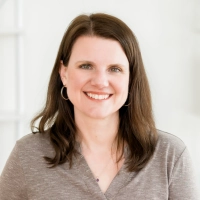 Kim Meninger
Kim Meninger
Leadership Coach & Consultant, Kim Meninger
Turn Personal Struggles into Leadership Lessons
I use my personal experiences and failures as a bridge to help others feel seen, not judged. One story I often share is that I failed kindergarten — not because I couldn’t learn, but because I colored outside the lines. That moment stuck with me for years. It taught me early on that being different or not following the “rules” came with consequences, especially as an Asian girl raised to seek approval and stay in line.
But now, I use that story to show my clients — especially Asian women — that coloring outside the lines isn’t a failure. It’s leadership. It’s courage. When I help women reclaim their voices or step into visibility, I remind them that the things we were once shamed for are often our greatest strengths. I share my journey so they know it’s okay to rewrite their stories — and create new rules on their own terms.
 Sheena Yap Chan
Sheena Yap Chan
Wall Street Journal Bestselling Author, Sheena Yap Chan
Use Lean Testing to Validate Ideas
I turn my misfires into client roadmaps. When my first wellness-coach program launched to total silence, I dissected every flawed assumption — skipping market validation and relying on gut instinct over data — and built a step-by-step “micro-test” playbook (think $5/day landing-page ads and 5-question surveys) to refine messaging. I now guide every client through that same lean-testing sequence before they write a single sales page. Recently, a health coach client ran three 60-second ad variants, spent under $50, and sold out her beta cohort in 72 hours — no guesswork, just proven tactics.
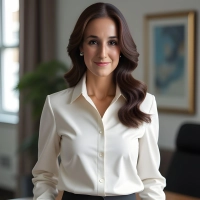 Kristin Marquet
Kristin Marquet
Founder & Creative Director, Marquet Media
Share Setbacks to Illustrate Growth Process
I often share my personal experiences, including setbacks, to build rapport and illustrate that challenges are a normal part of growth. It’s about demonstrating empathy and showing clients they’re not alone in their struggles. What’s more, it helps to demystify the coaching process, making it feel more authentic and less theoretical.
For example, I once had a client struggling with self-doubt after a major career pivot didn’t go as planned. I shared my own story of launching a new service that initially flopped, detailing the emotional toll and the practical steps I took to analyze what went wrong and pivot. We discussed how I reframed that “failure” as invaluable market research and a lesson in resilience. This helped them see their own setback not as an end, but as critical data for their next, more informed move.
 Cindy Cavoto
Cindy Cavoto
Founder, CindyCavoto.com
Adapt Services Based on Customer Feedback
Listening to your audience is key to evolving and improving your business. Initially, I focused on delivering what I thought people needed, but I quickly realized that customer feedback provides insights I could never have anticipated on my own.
I began gathering feedback through a combination of surveys and social media interactions. I also created a feedback loop by encouraging clients to share their experiences with the Holistic 360™ Program. It wasn’t just about collecting positive feedback — it was also about understanding where clients felt challenged, what they needed more of, and what wasn’t working as well as it could.
Once I gathered this information, I used it to adapt the program — whether that meant refining certain aspects of the curriculum, offering more personalized content, or making the user experience smoother. For example, one common piece of feedback I received early on was that clients wanted more flexibility in the program, so I ensured that I incorporated this into future iterations.
My advice to other founders would be to embrace feedback, both positive and critical. Don’t take it personally; instead, view it as a tool for growth. The more you listen and act on feedback, the better your product or service will become. It’s about creating a culture of improvement. This not only enhances the quality of what you offer but also deepens your relationship with your clients, making them feel valued and heard.
 Tayelor Kennedy
Tayelor Kennedy
Wellness Expert & Entrepreneur, Tayelor Kennedy
Blend Real-Life Lessons with Professional Advice
Being transparent and human really resonates with people. I don’t just design for others… I live with the things I recommend. I’ve personally tried trendy finishes in my own home, like black fixtures in my master bathroom. Without a water softener, those faucets were the death of me! The lime buildup was fast and brutal. I also tried those waterfall faucets with the glass base. They looked beautiful on day one, but again, without softened water, the calcium buildup was awful. Constant cleaning and frustration.
So when clients bring up those finishes, I don’t just say “they’re popular” or “they’ll look great.” I ask deeper questions and share my personal experiences. I tell them what worked, what didn’t, and how to avoid those same headaches. It’s not about discouraging their choices — it’s about helping them make informed ones.
One client really wanted matte black plumbing and waterfall faucets throughout their home. After hearing about my own experience, they decided to invest in a water softener system first. Months later, they told me it was the best advice they got during the entire renovation. That’s what I aim for — blending real-life lessons with beautiful design.
 Melody Stevens
Melody Stevens
Owner, Design On A Dime Interiors
Manage Expectations Through Honest Communication
I took on a renovation project early in my career that was simply too large for the resources I had available at the time. We fell behind schedule, exceeded the budget, and the client was dissatisfied. It was a difficult lesson, but it compelled me to reconsider how I plan jobs, communicate with clients, and manage expectations. Now, I’m upfront about what’s realistic, even if it’s not what someone wants to hear immediately. That honesty, shaped by experience, has actually helped build stronger trust with my clients.
 Kiel Kellow
Kiel Kellow
Business Owner, Kellow Construction
Shift Focus from Content Volume to Conversion
There was a time when I thought more content meant better results. We were helping a client build out their blog, and the focus was entirely on volume. Publish consistently, rank higher, and drive traffic — that was the logic.
But a few months in, the traffic came…and nothing happened. Leads didn’t increase. Sales didn’t move. It felt like we were shouting into the void.
That moment taught me something I carry into every client conversation now. That learning is that content is only powerful when it speaks to real questions buyers are asking during the decision stage.
Since then, we’ve shifted our entire approach. When we start with a new client, we don’t just ask what they want to publish. We ask where they’re losing deals. What objections come up in calls. What competitors keep showing up in conversations.
That shift, from content for visibility to content for conversion, came from a mistake I made early on. And because I’ve been there, I can spot the signs quicker and help clients avoid the same trap.
It’s not just strategy. It’s experience turned into intuition.
 Nitesh Gupta
Nitesh Gupta
Founding Member, Concurate
Use Intentional Self-Disclosure in Therapy
As therapists, we bring our whole selves into the therapeutic space, not just our training and techniques, but the wisdom gleaned from our own journeys through life’s challenges. While self-disclosure must be used sparingly and always in service of the client’s needs, there are moments when sharing carefully chosen aspects of our personal experience can create profound connection and hope.
My own tumultuous college years have become an unexpected wellspring of understanding in my work with young adults navigating similar struggles. I had a very difficult adjustment to college life and battled a great deal of social anxiety and isolation. I felt shame about this because I had never struggled in these areas before. I wish I would have had a therapist at the time, but I didn’t even have that on my radar. I will sometimes share these experiences with clients who are struggling with college life.
The key to effective self-disclosure lies in its intentionality. I share not to make myself feel better or to shift focus onto my own experience, but to serve a specific therapeutic purpose—whether that’s normalizing a client’s feelings, offering hope, or demonstrating that growth is possible. The disclosure is brief, relevant, and always returns focus to the client’s experience.
My college struggles taught me that some of our most difficult seasons can become our greatest sources of wisdom and compassion. When I work with young adults who are questioning their worth, battling social anxiety, or feeling overwhelmed by the pressure to have it all figured out, I carry with me the deep knowledge that these feelings are both valid and temporary. This isn’t just theoretical understanding—it’s lived experience that informs how I hold space for their pain and their potential.
The goal is never to say, “I’ve been where you are, so I know exactly how you feel.” Instead, it’s to convey, “I’ve walked through difficult terrain too, and I believe in your capacity to find your way through with your own goals as your guide.” Sometimes, that subtle difference can make all the difference in helping a young person feel seen, understood, and hopeful about their path forward.
 Allyssa Powers
Allyssa Powers
Therapist + Educator, Allyssa Powers
Test Marketing Tactics on Personal Projects
I’ve been working with B2B SaaS companies for over 12 years as a marketing consultant, and in January, I acquired my current company.
One reason for purchasing the tool was to test different marketing tactics and share successful strategies with my clients. This allows me to experiment without negatively impacting their businesses.
I’ve spent months creating different types and formats of content to try to rank my own website in AI and LLMs. Mostly, I’ve created top 10 lists…and it’s worked. I’ve seen how my own website can go from page 5 in Google to being cited in AI within 6 months.
Sharing this knowledge with my clients has helped us craft an AI-focused H2 2025 marketing strategy to increase visibility. But more importantly, they now have an answer they can communicate internally when asked, “What’s marketing’s plan for AI?” This provides them with both a strategy and peace of mind.
 Steven Macdonald
Steven Macdonald
Founder, OKRs Tool
Prioritize Sustainable Growth Over Quick Wins
I use my personal experiences and failures as valuable lessons to help my clients navigate their own challenges. One specific example comes from working with a healthcare client who was struggling to rank for highly competitive keywords. Initially, I applied the same quick-win strategies that had worked for other clients, but we didn’t see the traction we were hoping for. This failure taught me that SEO success is not about achieving fast results, but rather about sustainable, long-term growth. I realized that focusing solely on rankings and shortcuts wouldn’t deliver lasting success.
After reassessing the situation, I shifted the strategy to focus on content depth, user intent, and quality backlinks, rather than just targeting competitive keywords. This more thoughtful, long-term approach allowed us to build a stronger foundation for organic growth. Over time, we saw significant improvements in both rankings and conversions. I now share this experience with clients to emphasize that patience and adaptability are essential in digital marketing. My past failures have taught me to prioritize sustainable results, and I help my clients do the same, learning from setbacks and driving success over time.
 Hassan Khan
Hassan Khan
CEO and Founder, Techvando
Apply Lessons from Past SEO Mistakes
I leverage my personal experiences and failures to help clients by applying lessons learned from my own missteps. Early in my career, I focused too much on keyword stuffing without considering user experience. Once I shifted to prioritizing quality content and user intent, my results improved significantly. For example, a client in the e-commerce space saw minimal conversions when targeting broad keywords. After advising them to focus on long-tail keywords and user intent, we saw a 30% increase in conversions. I apply these insights to guide clients toward more sustainable, user-centric SEO strategies.
 Sheyne Branconnier
Sheyne Branconnier
Owner & Marketing Director, Smile MEDIA
Stay Connected During Setbacks for Faster Recovery
Back in 2010, I was heading into my senior year as the starting quarterback. Expectations were sky-high. We were predicted to have a breakout season and I was ready to lead the charge. Then, during training camp, I tore my hamstring. It was a second-degree tear. Just like that, everything changed. I couldn’t perform, and worse, I started to lose my motivation.
But my coach didn’t let me drift. He told me to show up anyway. Come to practice. Stay connected to the team. He said, “This is about more than your body. Being around the guys is going to help you heal mentally too.” And he was right. That experience taught me something I’ve never forgotten.
Now, when one of our members at Resilience gets injured or hits a setback, I tell them the same thing. Don’t disappear. Don’t isolate. Show up and do what you can. It might just be stretching, or physio, or cheering others on. But staying in the environment makes all the difference. The people who keep showing up, even when they’re not at full strength, are the same ones who bounce back quicker and come back stronger.
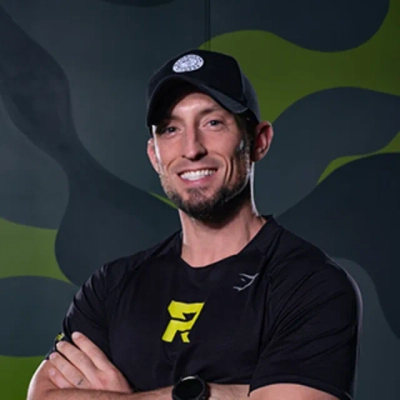 Andrew Gillis
Andrew Gillis
Co-Founder, Head Coach Resilience Fitness, Resilience Fitness
Turn Career Missteps into Valuable Insights
After 17 years in law enforcement, including time as a Patrol Sergeant, I’ve learned that failure isn’t the enemy. It’s a brutal but effective teacher. One of the most valuable lessons came early in my career when I trusted someone I shouldn’t have. That mistake didn’t just sting — it derailed my career path. I’ve learned to verify everything, trust slowly, and anticipate the unexpected.
I am now starting a company, and I am bringing hard-earned wisdom into every client interaction. If someone hires me to find a missing person or conduct surveillance, they won’t just get technical skills, but they’ll also get all the scars and instincts that came from me doing it wrong once and never wanting to feel that again.
I tell clients point-blank, “You’re not paying me to guess. You’re paying me because I’ve already made the mistakes others are still learning from.”
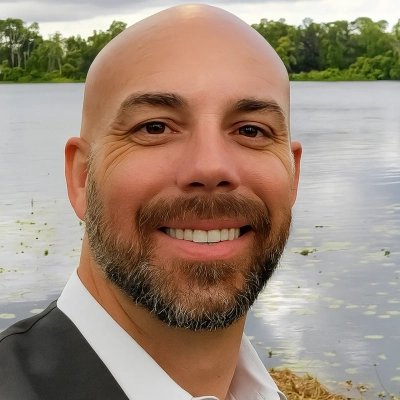 Zakariah Dorman
Zakariah Dorman
Co-Owner, Foxtrot 1 Security Consulting and Investigations
Transform Financial Struggles into Healing Frameworks
I use my own financial failures and healing journey as a living blueprint to help my clients transform not just their budgets, but their beliefs about money. I’ve experienced job loss, debt, financial shame, and survival-mode spending. But instead of hiding those moments, I now use them as bridges to connect with my clients with compassion and truth.
One specific example is how I turned my struggle with emotional spending into a healing framework I now teach called the Bare Root Budget. I realized I was spending money I didn’t have not out of greed, but from unhealed emotional wounds: grief, stress, people-pleasing, and burnout. I used to feel broken because I couldn’t stick to a budget, but once I paused and started tracking my spending by emotion, not just numbers, everything changed.
Now I teach my clients to do the same: we walk through their financial habits together with no shame, identify emotional triggers behind overspending, and create soul-aligned money rituals that reflect self-worth. One client told me she cried after realizing she’d never thought of money as something that could bring her peace. That’s when I knew this was bigger than budgeting; it was about healing.
I believe our pain has purpose when we’re willing to alchemize it. My failures were the seeds for the Humble Hustle Wholeness Method, and I bring that lived wisdom into every session, workbook, and client call.
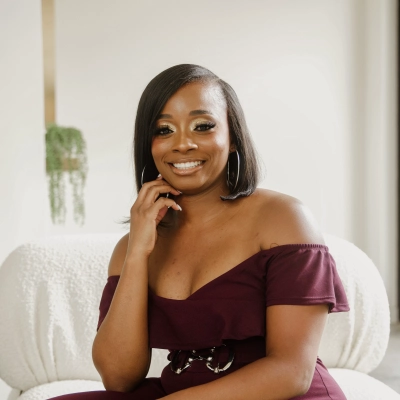 Sha’Kreshia Lewis
Sha’Kreshia Lewis
Personal Finance Educator, Humble Hustle Finance

